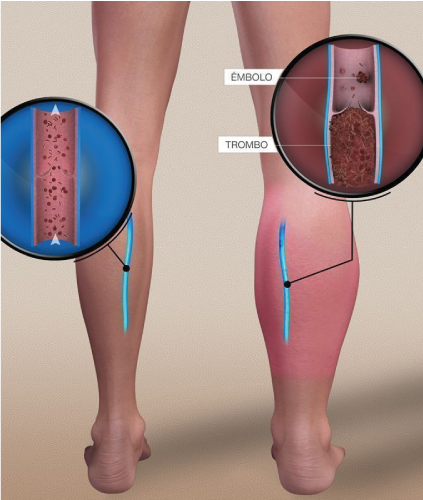Thromboembolic Disease
Venous Thromboembolic Disease (VTE) is a very common pathology that appears when thrombi form in the deep venous trajectories of both extremities and the abdomen, thorax or skull. If these thrombi are detached from the venous wall, their final destination will be the lung, causing the so-called pulmonary thromboembolism (TEP), the main complication of venous thrombosis, and potentially fatal.
A peculiarity of this entity is that it occurs in a very variable way, with nonspecific symptoms, such as swelling of one leg (thrombosis of the popliteal or femoral veins), abdominal pain (thrombosis of the portal or mesenteric veins), choking or tachycardia when doing effort (thrombosis or pulmonary embolism) or headache (cerebral venous sinus thrombosis). This means that sometimes the diagnosis is complicated, being therefore a disease that is frequently suspected, diagnosed and treated by the internist.
Tell us about your case
At Inside Internistas we provide our users with a form in which they can present their case, so that one of our specialists can study it personally.
You just have to access the section and fill in the attached form with your data.
The definitive diagnosis is established with venous ultrasound, angio-CT, angio-MR or venography. Treatment should be started as soon as possible, with fibrinolytics, anticoagulants, and sometimes with interventional venous surgery, a technique performed by a Vascular Surgeon, with intravenous recanalization methods and very occasionally using venous stents. Subsequently and depending on the cause of the thrombosis, anticoagulation is maintained between 3 and 12 months, and this treatment should only be indefinite in rare occasions.





